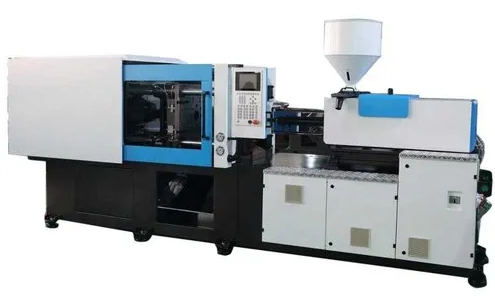
Selecting the right injection molding machine is crucial for ensuring efficient production and high-quality parts. Here’s a detailed guide on how to select the best injection molding machine for your needs:
1. Understand Your Requirements
a. Part Specifications
- Size and Weight: Determine the maximum size and weight of the parts you will be molding.
- Material: Identify the type of plastic materials you will be using. Different materials have different processing requirements.
b. Production Volume
- Cycle Time: Estimate the required cycle time to meet your production targets.
- Batch Size: Consider the number of parts needed per production run and the total annual volume.
[elementor-template id=”4330″]
2. Machine Specifications
a. Clamping Force
- Calculation: Calculate the required clamping force based on the projected area of the part and the material used. A general rule is to multiply the projected area by a factor (e.g., 2 to 5 tons per square inch) depending on the material.
- Example: For a part with a projected area of 50 square inches using PP, you might need a clamping force of around 150 to 250 tons.
b. Injection Unit
- Shot Size: Ensure the machine’s shot size is appropriate for the part weight. The shot size should be 20-80% of the machine’s injection capacity.
- Plasticizing Rate: Check the plasticizing rate to ensure it meets the material throughput required for your part.
c. Machine Size
- Tie Bar Spacing: Ensure the tie bar spacing can accommodate your mold size.
- Platen Size: Check that the platen size is sufficient for your mold dimensions.
3. Additional Features
a. Screw Design
- General-Purpose vs. Specific: Choose a screw design that matches the materials you will be processing. General-purpose screws are versatile, while specific screws are optimized for particular materials.
b. Control Systems
- Advanced Controls: Look for machines with modern control systems that offer precise control over injection parameters and provide useful data for process optimization.
c. Energy Efficiency
- Servo Motors: Consider machines with servo motors for energy savings.
- Hybrid/Electric Machines: Evaluate whether hybrid or fully electric machines offer benefits in terms of energy efficiency and precision for your application.
4. Supplier and Support
a. Reputation and Reliability
- Manufacturer Reputation: Choose machines from reputable manufacturers known for quality and reliability.
- Customer Support: Ensure the supplier offers strong customer support, including training, maintenance, and spare parts availability.
b. Cost Considerations
- Initial Investment: Consider the initial cost of the machine, but also weigh this against its capabilities and how well it meets your needs.
- Operating Costs: Factor in operating costs, including energy consumption and maintenance requirements.
5. Future-Proofing
a. Flexibility
- Versatility: Choose a machine that can handle a range of materials and part sizes to accommodate future projects.
- Expandability: Consider machines that can be upgraded or expanded as your production needs grow.
[elementor-template id=”4331″]
Example Scenario
- Part Specifications:
- Part: Plastic housing for an electronic device
- Material: ABS
- Maximum Part Size: 8 inches x 6 inches
- Part Weight: 200 grams
- Machine Specifications:
- Clamping Force Calculation:
- Projected Area: 48 square inches
- Required Clamping Force: 48 sq. in. x 3 tons/sq. in. = 144 tons
- Select a 150-200 ton machine for flexibility.
- Injection Unit:
- Shot Size: Ensure the machine can handle 200 grams per shot.
- Plasticizing Rate: Sufficient for ABS processing.
- Machine Size:
- Tie Bar Spacing and Platen Size: Confirm that the mold fits comfortably.
- Clamping Force Calculation:
- Additional Features:
- Screw Design: General-purpose screw suitable for ABS.
- Control Systems: Advanced controls for precise parameter management.
- Energy Efficiency: Preferably a hybrid machine for energy savings.
- Supplier and Support:
- Manufacturer: Choose a well-known brand with good reviews.
- Support: Ensure they provide comprehensive support and training.
- Future-Proofing:
- Versatility: Machine should handle other materials like PP and PC.
- Expandability: Option to upgrade for larger part production.
Conclusion
Selecting the right injection molding machine involves careful consideration of part specifications, machine capabilities, additional features, supplier support, and future needs. By thoroughly evaluating these factors, you can ensure that the chosen machine will meet your production requirements efficiently and cost-effectively.
Related Conten: Prototype Manufacturing
 DTG Mould Trade Process |
|
| Quote: | According to sample, drawing and specific requirement. |
|---|---|
| Discussion | Mold material, cavity number, price, runner, payment, etc. |
| S/C Signature | Approval for all the items. |
| Advance | Pay 50% by T/T |
| Product Design Checking | We check the product design. If some position is not perfect, or can not be done on the mould, we will send customer the report. |
| Mold Processing | Send report to customer once each week |
| Mold Testing | Send trial samples and try-out report to customer for confirmation |
| Mold Modification | According to customer’s feedback. |
| Balance Settlement | 50% by T/T after the customer approved the trial sample and mould quality. |
| Delivery | Delivery by sea or air. The forwarder can be designated by your side. |
 |
|

